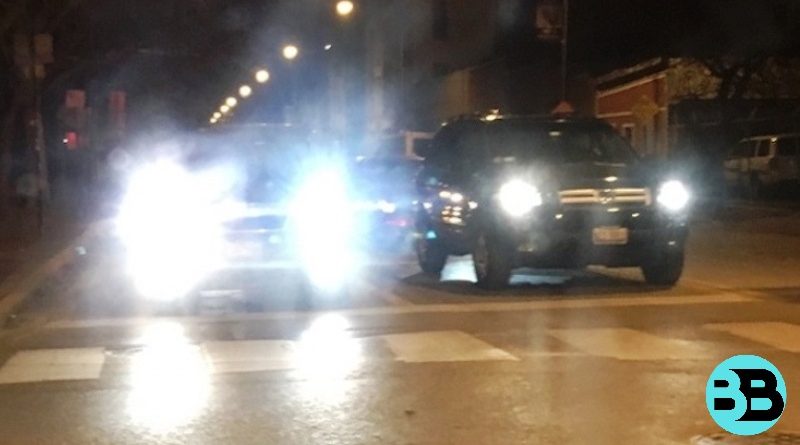Are white led lights safe for road transport?
White LED lights are a popular choice for road transport due to their energy efficiency, long lifespan, and high brightness. However, there has been some debate over whether or not they are safe for use on the road. In this article, we will explore the safety of white LED lights for road transport and the factors that contribute to their safety.
What are LED lights?
LED lights, or light-emitting diodes, are a type of solid-state lighting that uses a semiconductor to emit light. They are commonly used in electronic devices such as televisions, computer screens, and traffic signals. LED lights are also increasingly used in residential and commercial lighting applications, as well as in automotive lighting.
LED lights come in a variety of colors, including red, blue, green, and white. White LED lights are popular for their brightness and energy efficiency and are commonly used in outdoor lighting and automotive lighting.
Benefits of LED lights for road transport
There are several benefits of using LED lights for road transport, including:
- Energy efficiency: LED lights use significantly less energy than traditional incandescent or fluorescent lights, which can help to reduce fuel consumption and greenhouse gas emissions.
- Long lifespan: LED lights have a longer lifespan than traditional lighting, which can help to reduce maintenance costs and improve safety on the road.
- High brightness: LED lights are much brighter than traditional lighting, which can improve visibility on the road and reduce the risk of accidents.
- Flexibility: LED lights can be designed in a variety of shapes and sizes, which makes them ideal for use in a range of automotive applications.
Safety concerns with LED lights for road transport
While LED lights offer many benefits for road transport, there are also some safety concerns to consider. Some of the main concerns include:
- Glare: One of the main concerns with LED lights is that they can produce glare that can be distracting or blinding to other drivers. This is especially true for high-intensity LED lights, which can produce a strong glare that can affect the vision of other drivers.
- Color temperature: The color temperature of LED lights can affect their safety on the road. High-color temperature LED lights, which produce a blue-white light, can make it difficult to see other objects on the road, especially in rainy or foggy conditions.
- Color rendering: LED lights can have a different color rendering index (CRI) than traditional lighting, which can affect the ability of drivers to accurately judge the color of objects on the road.
- Uniformity: LED lights can produce uneven lighting patterns, which can make it difficult for drivers to see objects on the road.
Regulations for LED lights in road transport
To address the safety concerns associated with LED lights for road transport, many countries have introduced regulations and standards for LED lighting. These regulations typically cover the following areas:
- Maximum intensity: Regulations typically limit the maximum intensity of LED lights to prevent glare and ensure that they do not interfere with the vision of other drivers.
- Color temperature: Regulations may also specify a maximum color temperature for LED lights to ensure that they are safe for use on the road.
- Color rendering index: Regulations may specify a minimum color rendering index for LED lights to ensure that they accurately represent the color of objects on the road.
- Uniformity: Regulations may specify a minimum level of uniformity for LED lights to ensure that they provide even lighting patterns that are safe for drivers.
In the United States, the National Highway Traffic Safety Administration (NHTSA) has established regulations for LED lighting in road transport. These regulations specify maximum intensity levels for LED lights, as well as minimum color rendering index and uniformity requirements.
In the European Union, LED lights used in road transport must comply with the ECE Regulation 128 also specifies requirements for color temperature and color rendering index, as well as uniformity and beam patterns. These regulations are designed to ensure that LED lights used in road transport are safe and effective.
Other countries, such as Australia and Japan, also have regulations for LED lighting in road transport. These regulations typically follow similar guidelines to those established by the NHTSA and ECE.
Tips for the safe use of LED lights in road transport
To ensure the safe use of LED lights in road transport, it is important to follow some basic guidelines. Some tips for the safe use of LED lights on the road include:
- Use approved LED lights: Only use LED lights that comply with regulations and standards for road transport in your country.
- Position LED lights correctly: Position LED lights correctly to avoid creating glare or distracting other drivers.
- Avoid using high-intensity LED lights: Avoid using high-intensity LED lights that can create a strong glare.
- Choose an appropriate color temperature: Choose LED lights with an appropriate color temperature for the conditions in which you will be driving.
- Ensure uniformity: Ensure that LED lights provide a uniform lighting pattern to avoid creating blind spots or other hazards.
Conclusion: Overall, white LED lights are safe for road transport when used correctly and in compliance with regulations and standards. While there are some safety concerns associated with LED lights, such as glare and color temperature, these concerns can be addressed through proper use and compliance with regulations. LED lights offer many benefits for road transport, including energy efficiency, long lifespan, high brightness, and flexibility. By following basic guidelines for safe use, LED lights can be an effective and safe lighting solution for road transport.
Read also:
Is it legal to use white LED headlights on bikes and cars?





